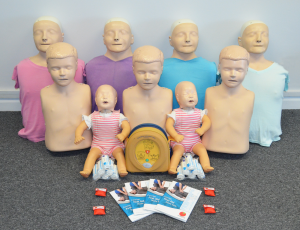This is the 2-day Ofsted, EYFS, CSSIW and SureStart compliant course. It is available as a 2-day course or a Blended course with the first 6 hours taken as an online course.
See also our Blended option which means you only spend 1 day in the classroom. The costs are lower because of this.
We can combine this with the 1 day Emergency First Aid at Work course certified by 4 Minutes. It will require additional time (30 Minutes) and cost (£100 + £20 per learner for the Certificate), but saves your staff having to attend two courses. Let us know when you enquire
Who is the 2 day Paediatric First Aid for?
The course is aimed at anybody who comes into contact with children including pre-school staff, nursery staff, play workers, children centre staff, teachers, Learning Support Assistants, holiday camp workers, parent and toddler group volunteers, child minders, nannies, foster carers, au pairs, parent helpers, babysitters, community workers, youth workers, parents, grandparents, aunts and uncles. If you are likely to take your groups outside on field trips we also offer an enhanced Outdoor Paediatric First Aid course.
As of 3rd April 2017, maintained schools, non-maintained schools, independent schools, all providers on the Early Years Register and all providers registered with an early years childminder agency must comply with the latest Statutory framework as detailed here:
Statutory Framework (opens in a new tab). Paragraph 3.25 is the main paragraph listing the requirements with Annex A detailing the criteria for effective First Aid Training (in other words, the course syllabi). 4 Minutes courses cover the content required for both the 6-hour and the 12-hour courses.
If you wish to obtain the Millie’s Mark for your Organisation, this is the qualification that all your staff will need.
No previous first aid experience is required to attend this course.
About this qualification
This qualification is built from 2 mandatory units of assessment, taught through a modular and progressive training structure
Unit 1 Paediatric Emergency First Aid
Unit 2 Managing Paediatric Illness and Injury
Passing both units leads to the Paediatric First Aid qualification or, for Regulated courses, the Level 3 Award in Paediatric First Aid (VTQ). Both qualifications are EYFS compliant.
Please note that the pricing assumes that the course is run on consecutive days. There may be additional costs if the days are not consecutive


